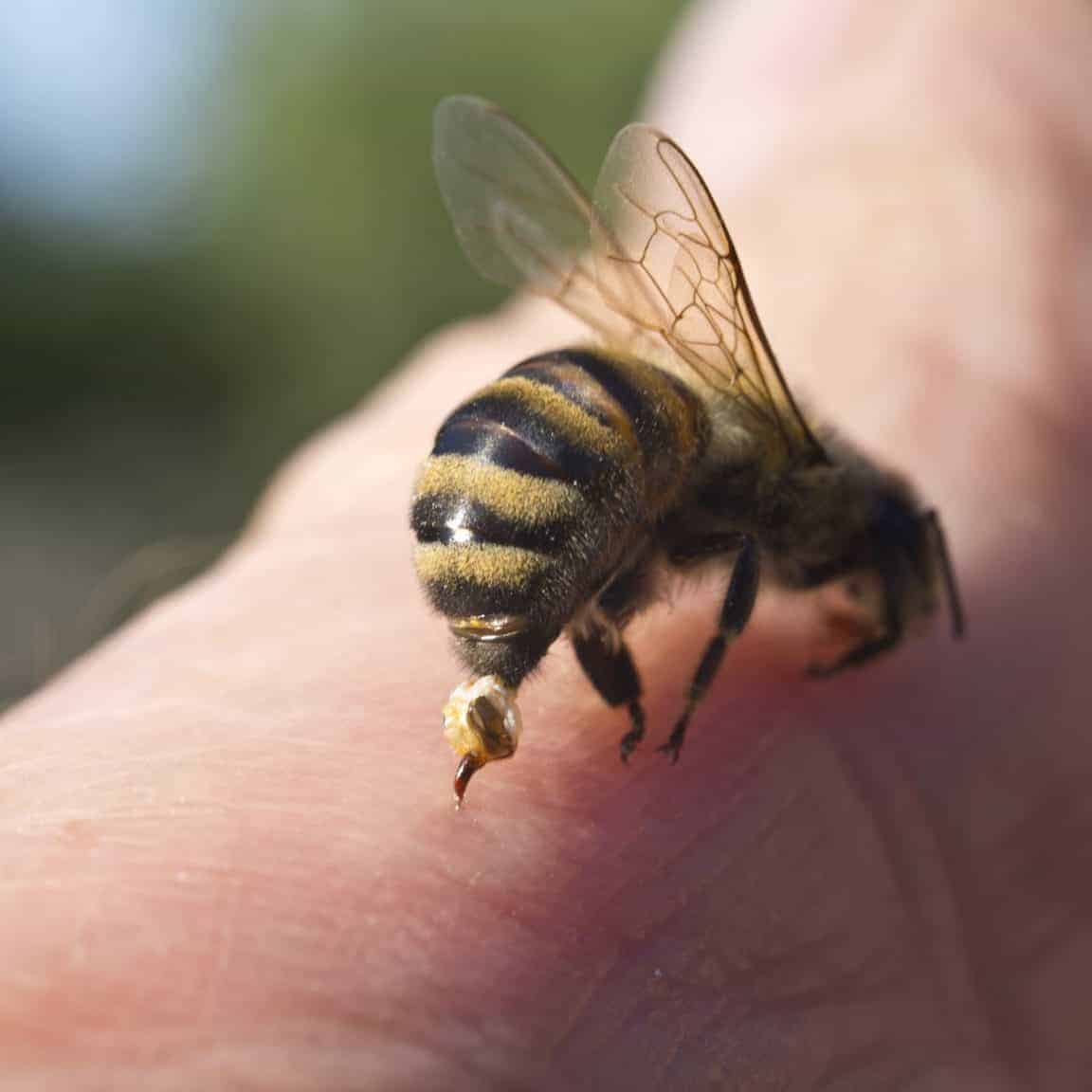Honeybee stingers are a key part of the beekeeping process, and it’s important for aspiring beekeepers to understand all of the ins and outs of how to properly handle them. This article, Beekeeping 101: Everything You Need to Know About Honeybee Stingers, will provide a comprehensive guide to understanding honeybee stingers and how to keep yourself and your bees safe during the beekeeping process. We’ll discuss everything from the anatomy of a honeybee stinger to the proper way to remove a stinger and treat the affected area. With this information in hand, you’ll be well-equipped to start your beekeeping journey.
Anatomy of a Honeybee Stinger
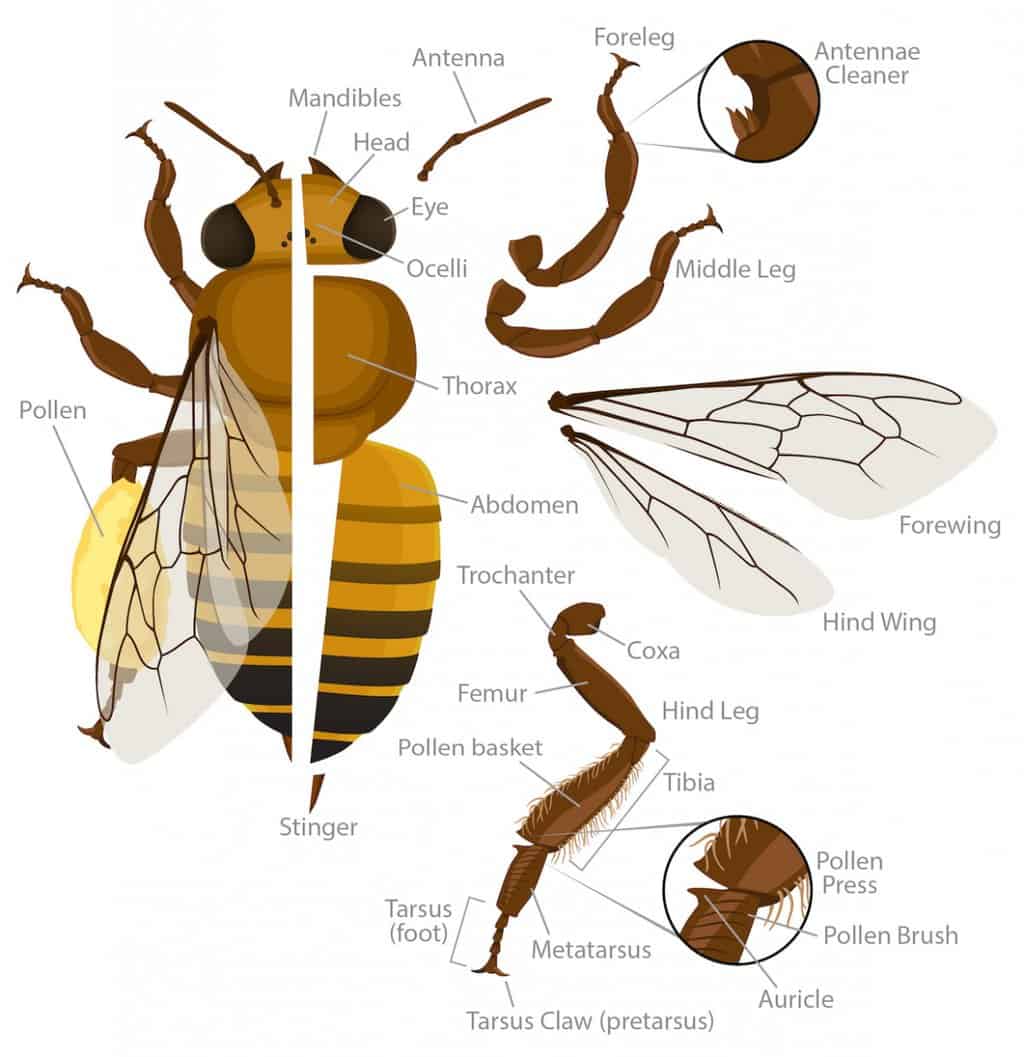
A honeybee stinger is composed of two parts: the shaft and the venom sac. The shaft is a long, thin tube that pierces the skin and delivers the venom. At the base of the shaft is the venom sac, a small bulb-shaped organ that is connected to a venom gland. This is where the venom is produced and stored.
The stinger is made of chitin, a tough, flexible material that makes it difficult to remove. The shaft of the stinger is curved and barbed, allowing it to easily penetrate the skin and remain lodged. This also makes it difficult to remove and can cause further damage as it is pulled out.
| Part | Description |
|---|---|
| Shaft | Long, thin tube that pierces the skin and delivers the venom. |
| Venom Sac | Small bulb-shaped organ connected to a venom gland, where the venom is produced and stored. |
| Material | Chitin, a tough, flexible material. |
When a honeybee stings, it can inject up to 0.3 milligrams of venom into the skin. The venom is composed of enzymes and proteins that can cause pain, swelling, and even an allergic reaction in some people.
The honeybee stinger is designed to be used as a last resort for defense. When a honeybee stings, it releases a pheromone that alerts other honeybees to come to its aid. As a result, honeybees will often swarm when they feel threatened. This is why it’s important to stay calm and not swat at bees when they’re nearby.
Can a Honeybee Sting Another Bee?
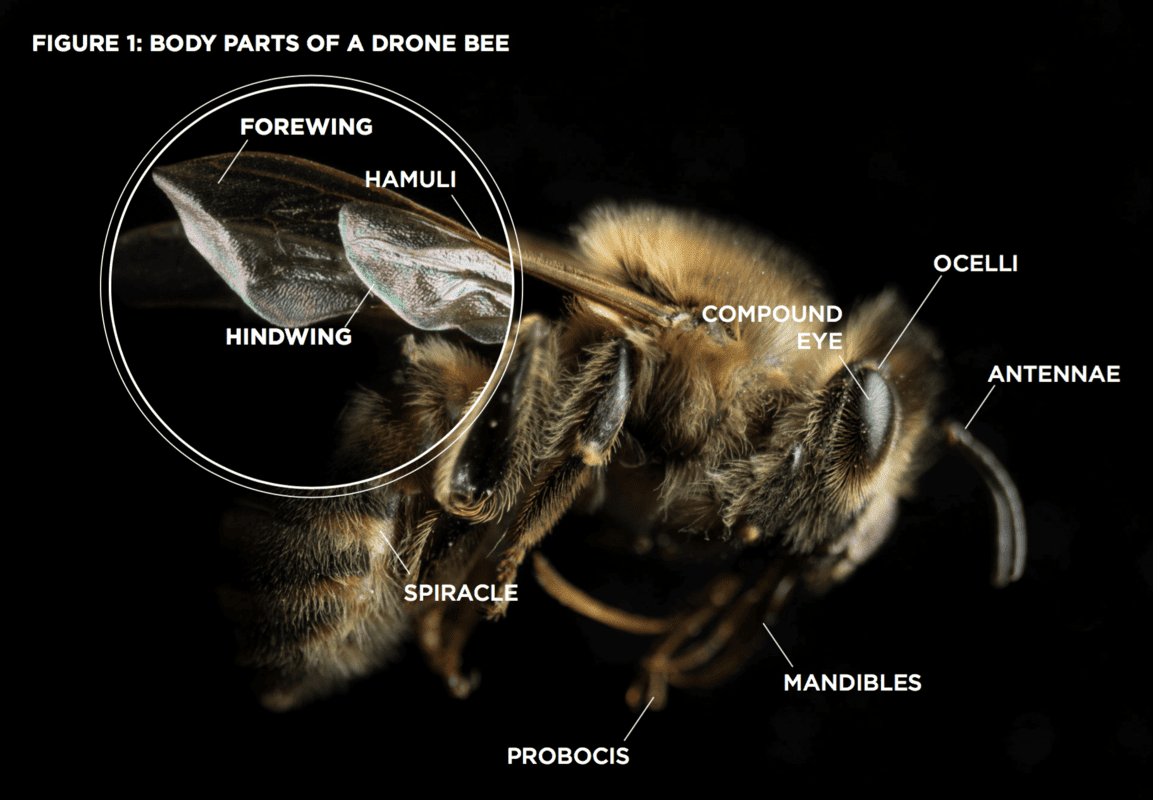
Yes, a honeybee can sting another bee. The sting is used as a form of defense, particularly against predators and other insects. It is also used in colony conflicts, in which bees from different colonies will fight for control of a food source or nesting area.
- Honeybees will sting if they feel threatened or perceive a risk to their colony.
- The sting is a reflex action, not a conscious decision.
- The sting contains a venom which can cause pain and swelling.
- The venom can also cause death if the bee is stung multiple times.
- The sting is designed to paralyze the target, making it easier for the bee to escape.
It is important to remember that honeybees do not usually sting unless provoked. They are non-aggressive insects and will usually flee rather than fight. However, if a bee is threatened or attacked, it will sting as a defense mechanism.
Types of Bee Stings
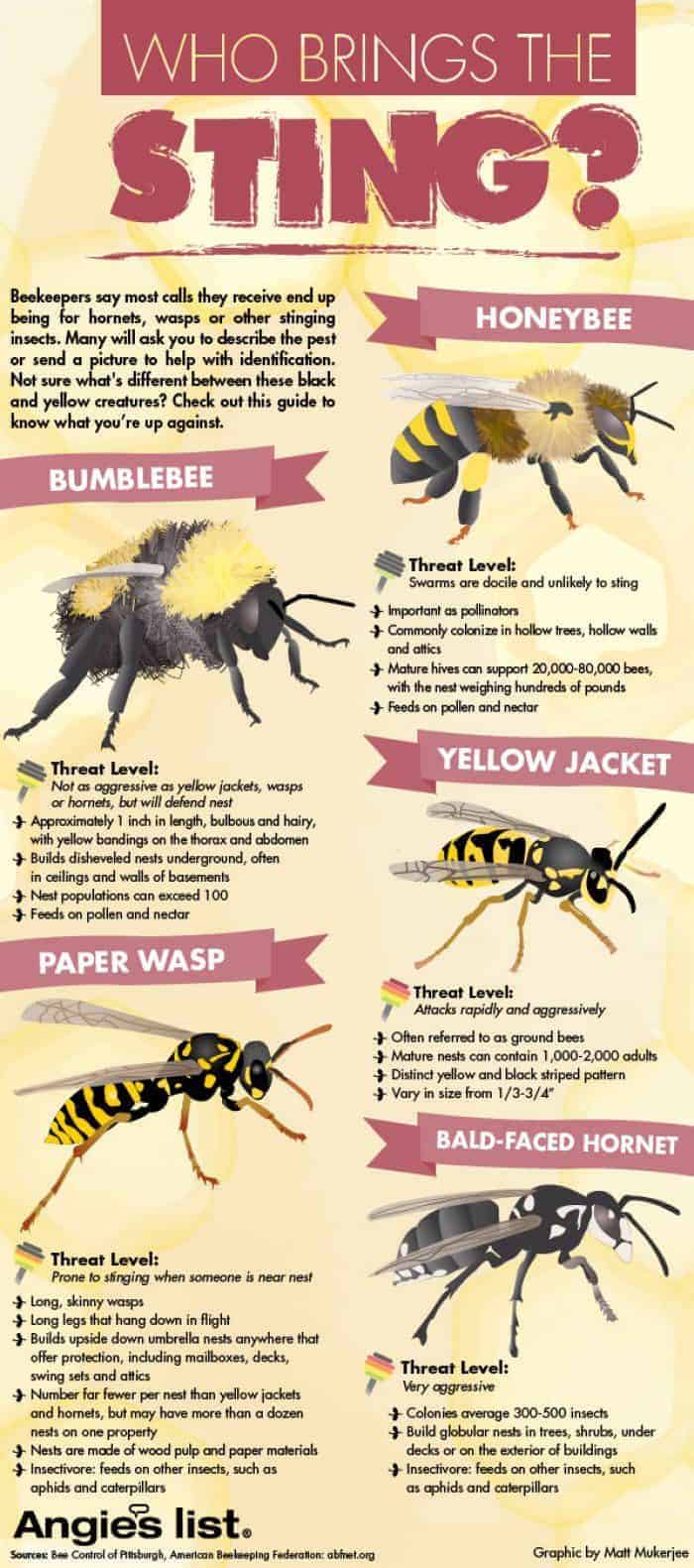
Stingers With Barbs
Honeybees are the only type of bee that has stingers with barbs. These barbs make it difficult for the stinger to be removed once it has been inserted into the skin. The bee’s stinger and venom sac are torn away from the bee’s body, leading to the bee’s death after stinging.
Stingers Without Barbs
Bumblebees are the only type of bee that has stingers without barbs. Bumblebees can sting multiple times with their smooth stingers. As the stinger is not barbed, it can be easily removed once it is inserted into the skin. Bumblebees rarely sting humans unless they feel threatened.
How a Bee Stinger Works
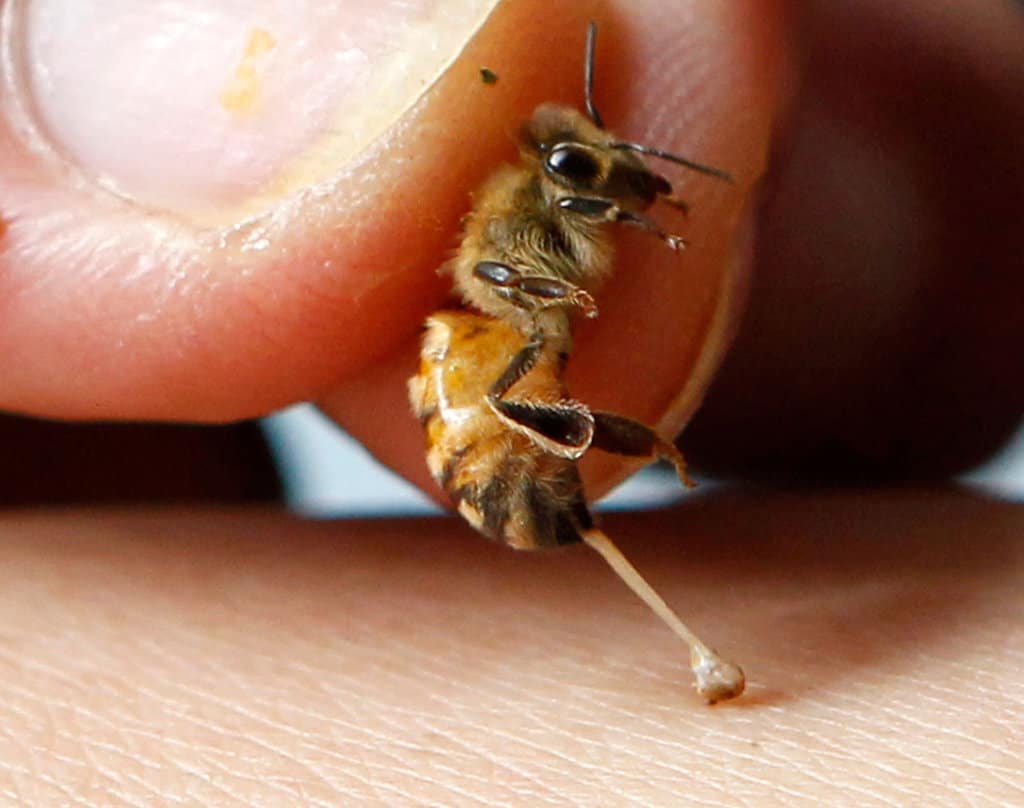
A bee’s stinger is an important defense mechanism used to protect the bee and its hive. It is a sharp, barbed, hollow tube attached to the bee’s abdomen. It is made up of two parts: the lancet and the venom sac. The venom sac is attached to the lancet and contains apitoxin, a neurotoxic substance that causes pain, swelling, and other symptoms in humans. Here’s a closer look at how a bee stinger works:
- Lancet: The lancet is a sharp, pointed, hollow tube. It is connected to the venom sac and has barbs on its tip that help the stinger stay lodged in the skin of its target. The lancet is also spring-loaded, meaning it can quickly and easily puncture the skin.
- Venom Sac: The venom sac is attached to the lancet and contains apitoxin, a neurotoxic substance. When the stinger punctures the skin, the venom sac is squeezed and the apitoxin is released into the wound, causing pain, swelling, and other symptoms in humans.
- Barbs: The barbs on the lancet are designed to help the stinger stay lodged in the skin of its target. The barbs also make it difficult to remove the stinger from the skin, as the barbs act like tiny hooks that dig into the skin.
When a bee stings, the lancet and venom sac are left in the skin. This can be painful and can cause an allergic reaction in some people. To remove the stinger, scrape it off with a credit card or your fingernail. Never try to pull it out with tweezers as this can cause more venom to be released into the skin.
Impact of Bee Stings
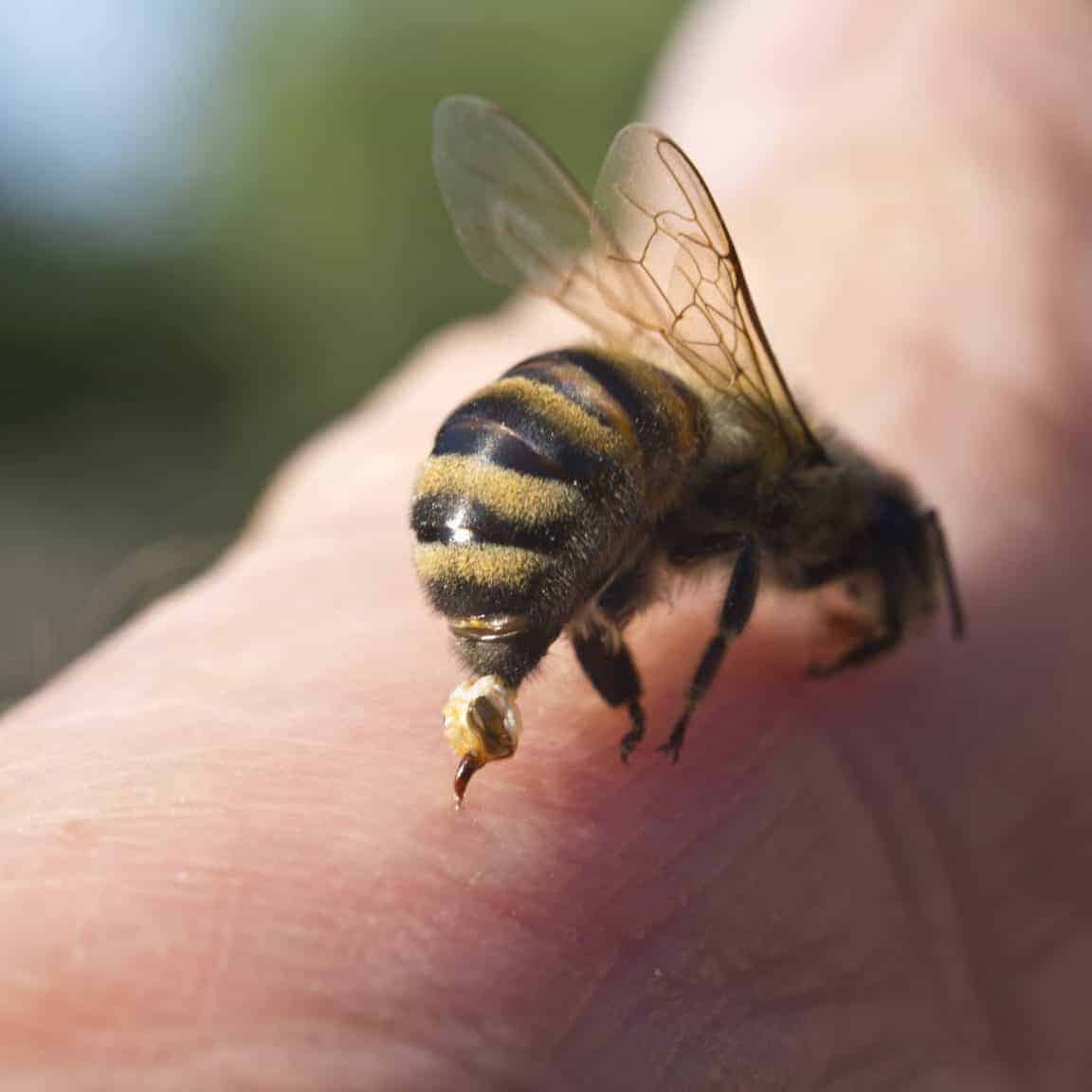
Bee stings can be painful and even dangerous for some people, especially those with severe allergies. That is why it is important to understand the impact of bee stings and how to best avoid them.
Bee stings can cause a variety of reactions in humans, ranging from mild discomfort to life-threatening anaphylaxis. The most common reaction is a red, swollen area around the sting that may cause localized pain, itching, and burning. Other reactions may include nausea, dizziness, difficulty breathing, and a rapid heart rate.
People with severe allergies may experience more serious reactions, such as anaphylaxis, which can be fatal. Anaphylaxis is an extreme allergic reaction that can cause nausea, difficulty breathing, and a drop in blood pressure that can lead to shock.
For those who are allergic to bee stings, it is important to carry an EpiPen or other form of epinephrine. This can be used to treat anaphylaxis if a sting occurs.
Beekeepers should also take precautions to protect themselves from stings. This includes wearing protective clothing, such as a bee suit, and using smoke to reduce the risk of being stung.
In addition to avoiding stings, beekeepers should also be aware of how to treat bee stings. The most important step is to remove the stinger using tweezers or a credit card. This should be done as quickly as possible to reduce the amount of venom that enters the body. After the stinger has been removed, a cold compress or baking soda paste can be applied to the area to reduce swelling and discomfort.
Overall, it is important to understand the impact of bee stings and how to best avoid them. With proper knowledge and safety measures, beekeepers can safely enjoy their hobby without worrying about the potential danger of a sting.
Prevention and Treatment of Bee Stings
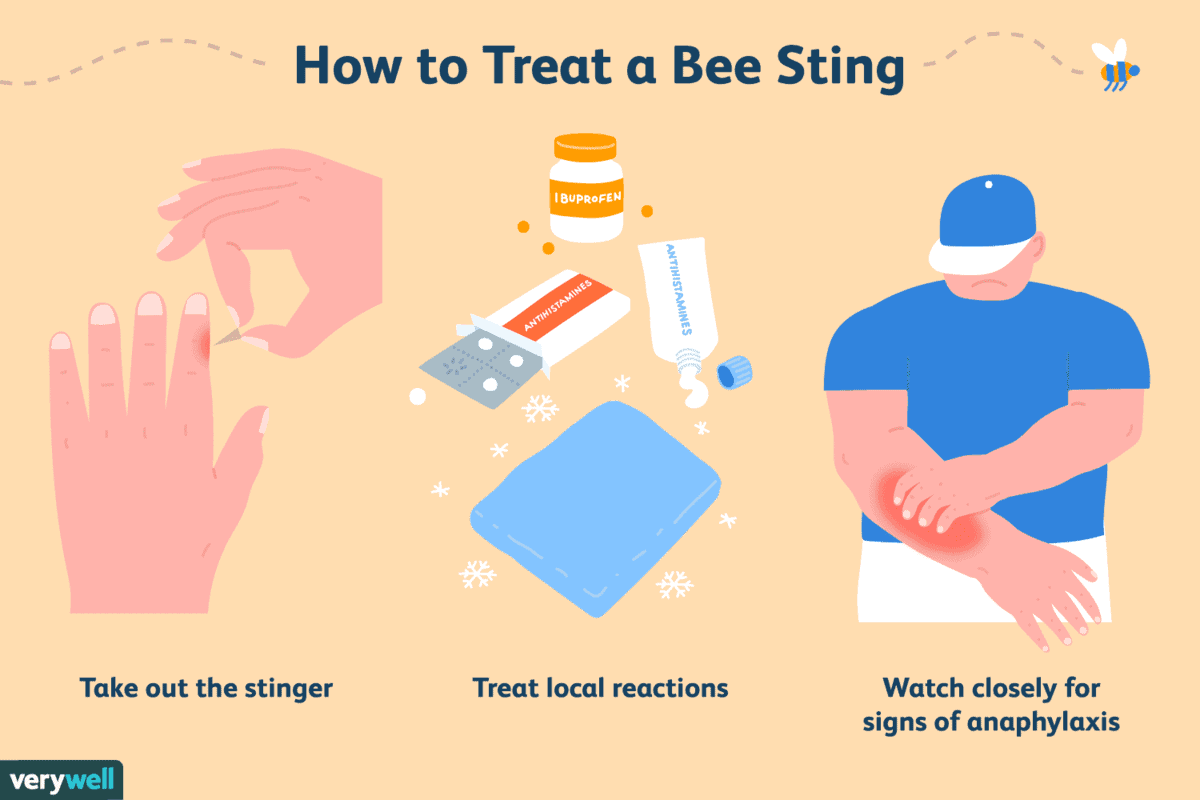
- Prevention
- When handling bees, wear protective clothing such as a beekeeping suit, gloves, and a veil.
- Be aware of your surroundings and avoid swatting or startling the bees.
- Remain calm and move slowly when working with bees.
- Treatment
- If you are stung, remove the stinger as soon as possible with a scraping motion using your fingernail or a credit card.
- Wash the area with soap and water.
- Apply a cold compress or an ice pack for 10 to 15 minutes.
- Take an over-the-counter pain reliever such as ibuprofen or acetaminophen.
Bee Sting Allergies
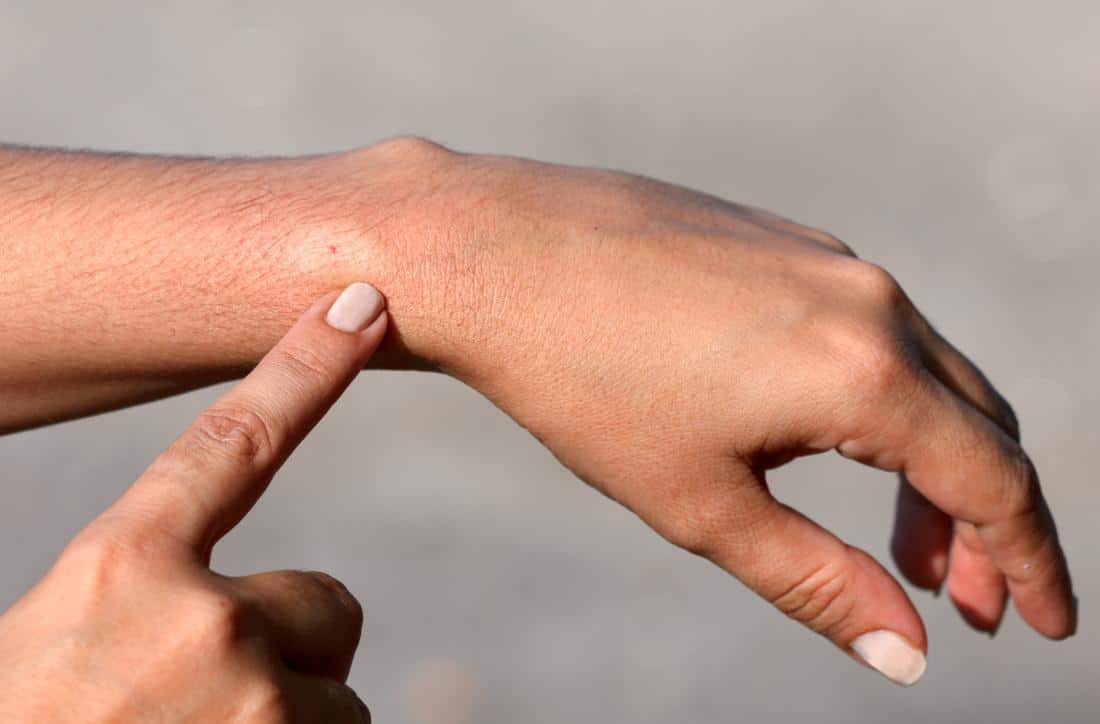
Bee stings can cause a variety of reactions, ranging from mild discomfort to anaphylaxis, a life-threatening allergic reaction. People who have a bee sting allergy should take extra precautions to avoid bee stings and carry an epinephrine auto-injector (EpiPen) for emergency use.
Signs and Symptoms of a Bee Sting Allergy
The signs and symptoms of a bee sting allergy may include:
| Signs/Symptoms | Description |
|---|---|
| Hives | Red, raised, itchy bumps on the skin |
| Swelling | Swelling of the face, eyes, lips, tongue, or throat |
| Wheezing or difficulty breathing | A whistling sound when inhaling, difficulty inhaling, or feeling like the chest is tight |
| Nausea, vomiting, or diarrhea | Upset stomach, feeling like you need to vomit, or frequent loose stools |
| Dizziness or fainting | Feeling like you’re going to faint or actually fainting |
Treatment for Bee Sting Allergies
If you have a bee sting allergy, you should carry an epinephrine auto-injector (EpiPen) and know how to recognize the signs and symptoms of an allergic reaction. If you experience any of the signs or symptoms listed above, immediately use your EpiPen and seek medical help.
In addition to carrying an EpiPen, it is important to consult an allergist to discuss further treatment options and a long-term care plan.
Benefits of Bee Stings
- Pain Relief: Bee venom contains melittin, which is an anti-inflammatory compound that has been shown to reduce inflammation and pain. It can be used to treat arthritis, tendonitis, and other conditions.
- Immune System Booster: Bee stings can increase the production of white blood cells, which helps in boosting the immune system.
- Healing Skin Conditions: Bee venom can be used to treat skin conditions such as eczema and psoriasis due to its anti-inflammatory properties.
- Can a Bee Sting Another Bee? Yes, bees can sting each other. This usually happens when they are defending the hive from an intruder or competing for resources.
- Honeybee Stinger: Honeybees have a barbed stinger that can cause severe pain in humans. However, the stinger will remain in the skin and eventually detach from the bee’s body, leading to its death.
Frequently Asked Questions
What kind of protective gear is needed to practice beekeeping?
Beekeeping requires protective gear to guard against bee stings and other bee-related hazards. Protective gear should include:
- Protective Clothing: A beekeeper suit, long-sleeved shirt, and long pants, preferably made of a thick material like cotton, to protect from bee stings.
- Gloves: Leather gloves are the best for protecting hands from bee stings.
- Veil: A fine mesh veil to protect the face and neck.
- Boots: Boots should be worn to protect feet and ankles.
- Smoker: A smoker is used to produce smoke to calm bees, while making it easier to handle them.
In addition, it is important to keep a first aid kit on hand in case of bee stings.
What should I do if I get stung by a honeybee?
- Remove the stinger – Immediately check for the stinger and remove it with a pair of tweezers or your fingernails. Do not pinch the stinger with your fingers as this can squeeze more venom into the wound.
- Clean the wound – Once the stinger is removed, rinse the area with soap and water, then apply an antiseptic or antibiotic ointment.
- Apply a cold compress – Apply a cold compress or ice pack to the area to reduce swelling and pain.
- Take an antihistamine – Take an antihistamine or other over-the-counter medication to reduce the itching and swelling.
- Monitor your symptoms – Monitor your symptoms and if they worsen or persist, seek medical attention.
How Can I Prevent My Bees from Stinging?
1. Wear Protective Gear: To avoid being stung, it is important to wear proper protective gear when handling bees. Beekeeping suits are designed to protect the beekeeper from stings and should be worn at all times when working with the bees. Gloves and a hat will also provide additional protection.
2. Move Slowly: Bees are more likely to sting if they feel threatened, so it is important to move slowly and calmly around the hive. Making sudden movements or loud noises can startle bees and make them more likely to sting.
3. Use Smoke: Smoke can be used to calm bees before handling them, as it signals to them that a fire is nearby and tricks them into thinking that they need to flee the hive. Smoke can also be used to distract any bees that are agitated and make them less likely to sting.
4. Check for Queen Cells: Queen cells are structures that bees build in order to produce new queens. If queen cells are present in the hive, the bees may be more likely to become agitated and sting. It is important to check for queen cells and remove them if necessary.
5. Inspect the Hive Regularly: Regularly inspecting the hive can help to identify any potential problems such as queen cells or a lack of food. This can help to prevent the bees from becoming agitated and stinging.
What are the Benefits of Beekeeping?
Beekeeping offers several important benefits to the environment and to beekeepers. The primary benefit is the production of honey and other bee products, such as beeswax, propolis, and pollen. These products can be used for food, medicinal purposes, and in cosmetics. Beekeeping also helps to increase crop yields, as honeybees play an important role in pollinating flowers and other plants. Additionally, beekeeping is a great hobby that can provide a rewarding experience for those who take it up.
Are There Any Risks Associated with Beekeeping?
Beekeeping is a popular hobby with many benefits, however, there are also some associated risks. Beekeeping can be dangerous due to the risk of being stung by a honeybee. Protective gear such as a bee suit and veil should be worn when working with bees. Additionally, beekeepers should educate themselves on the proper handling and management of hives. Finally, beekeeping can cause damage to the environment and should be done responsibly.
Conclusion
Beekeeping is an ever-growing hobby and profession. Understanding how a honeybee stinger works is essential to the practice. A honeybee stinger is an organ that contains two barbed lancets and a venom sac. Honeybees use their stingers to defend their hive against predators. Beekeepers must take precautions to avoid being stung. This includes wearing protective clothing and using smoke to calm bees. With the right knowledge and protective gear, beekeeping can be a safe and rewarding experience.
References
- Chapman, J. W., & Jacobson, S. (1998). Honey bee stings: allergic reactions and management. Annals of allergy, asthma & immunology, 81(5), 427-432.
- USDA Forest Service. (n.d.). Honeybee. Retrieved April 16, 2021, from https://www.fs.fed.us/wildflowers/pollinators/pollinator-of-the-month/honeybee.html
- Penn State Extension. (n.d.). Bee stings. Retrieved April 16, 2021, from https://ento.psu.edu/extension/pollinators/bee-stings
